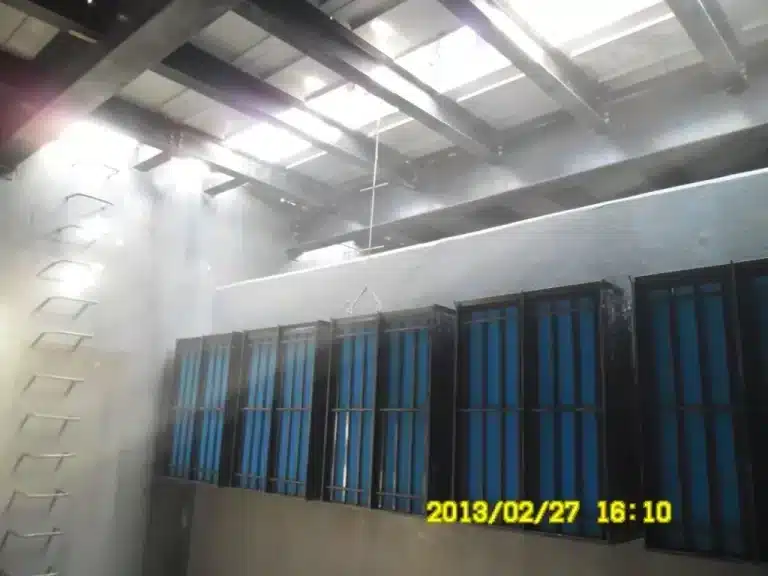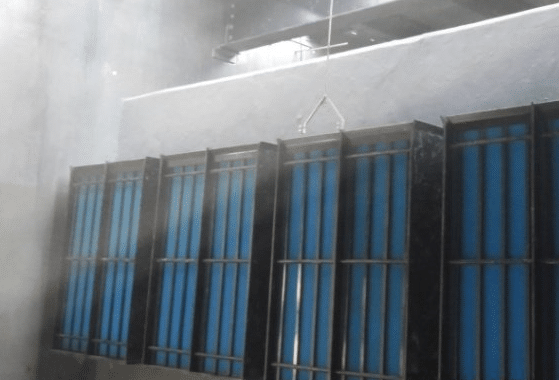Have you ever thought about how Maryland keeps its water clean and oil-free? The secret is underground. Maryland Below Ground OWS systems are changing how we fight water pollution. They offer a hidden yet effective way to protect our environment.
These systems are key in keeping our waterways clean by separating oil from water. Let’s explore how these innovative systems are making a difference in Maryland’s environmental protection.
Key Takeaways
- Freytech Inc. Maryland Below Ground OWS systems effectively separate oil from water
- Underground water storage solutions enhance environmental sustainability
- Subsurface reservoirs offer discreet and efficient pollution control
- OWS systems help businesses meet regulatory compliance standards
- Advanced technology achieves superior separation efficiency
- Below ground systems conserve space and integrate seamlessly with landscapes
Introduction to Below Ground Oil Water Separators
Below Ground OWS systems are key to saving water and protecting the environment. They separate oil from water, making sure the water is clean. Putting them underground helps businesses and cities a lot.
What are OWS Systems?
Oil water separators remove oils and dirt from water. They let oil float up and heavy stuff sink. This keeps the water clean and stops pollution. Below Ground OWS units are great for big projects.
Benefits of Underground Installation
Putting OWS systems underground saves space and looks better. It keeps the unit safe from the weather, making it last longer. Many companies like this way because it works well and doesn’t take up space.
Maryland’s Regulatory Landscape
Maryland has tough rules for OWS systems. The state wants them to work well to protect waterways. Companies must follow these rules when putting in and running Below Ground OWS units. Doing it right is important for saving water and following the law.
Maryland Below Ground OWS: Design and Components
Below Ground Oil Water Separators in Maryland are made for top-notch performance. They use cutting-edge designs to follow strict environmental rules. Let’s look at the main parts that make these separators work well.
Separator Chamber Configurations
Maryland’s underground separators have multi-chamber setups. This design helps separate oil from water step by step. The first chamber catches big particles. Then, other chambers refine the separation. This method makes sure wastewater is fully treated.
Coalescing Technology for Enhanced Separation
Coalescing technology changes the game in separator design. It uses special materials to merge small oil droplets into bigger ones. This makes removing oil easier and more effective. Many separators in Maryland use vertical-tube coalescers. These create a maze-like path for water, trapping oil particles well.
Materials and Construction Standards
Fiberglass is often used in Maryland’s Below Ground Oil Water Separators. This material doesn’t corrode and is lighter than traditional options. Fiberglass tanks are simpler to install and last longer. Separators come in sizes from 600 to 50,000 gallons. They can handle up to 4,000 gallons of water per minute. This variety lets businesses pick the right size for their needs.
Installation Process for Underground OWS
Installing Below Ground Oil Water Separators needs careful planning and precise steps. It starts with preparing the site, which means digging and making a solid base. This ensures the system works well for a long time.
Fiberglass separators are often used for underground OWS because they’re light. They make it easier to move and set up without needing big machines. Steel separators are strong but need more equipment and people to put in place.
Venting is key for Below Ground Oil Water Separators to work right. It’s important to keep the separator vented to avoid pressure issues and keep it running smoothly. For pipes over 6 inches wide, flexible connectors are used. They help with ground movement and protect against damage.
Adding an interceptor tank is a crucial step in installing underground OWS. This tank catches big debris before it reaches the separator. It helps keep the coalescer tubes clear and makes the system last longer. Putting the tank in the right spot is key for the separator’s efficiency.
These separators are crucial in storm water systems. They process runoff to meet the US EPA’s Clean Water Act standards. With effective oily water treatment, facilities protect the environment and dodge big fines.
Performance Standards and Efficiency Ratings
Maryland Below Ground OWS must follow strict standards. These systems are key in keeping the environment safe by separating oil from water before it’s released. Their success is based on how well they separate, the quality of the water they produce, and how fast they work.
Separation Efficiency Requirements
Separation efficiency is crucial for OWS performance. Top systems can remove oil droplets as tiny as 20 microns. This means the water released meets or beats legal standards, keeping local waterways clean.
Flow Rate Considerations
The flow rate of an OWS is very important. Systems are made to manage certain gallons-per-minute (GPM) based on their size and setup. A well-sized OWS works best, keeping high separation efficiency even when it’s busiest.
Effluent Quality Measurements
Effluent quality shows how well an OWS works. The best systems can get effluent quality as low as 5 parts per million (PPM), which is better than the North American limit of 10 PPM. This shows how modern OWS technology is good at protecting water resources.
Maintenance and Monitoring of Below Ground OWS
Keeping below ground oil water separators in top shape is key. Freytech Inc. provides electronic monitoring systems. These systems track oil levels and spot leaks in double-wall separators. They help with environmental efforts by acting quickly when needed.
UL 2215 listed separators need electronic systems to monitor liquid levels. This makes OWS operations more reliable. Maintenance includes removing oil and sludge, cleaning coalescer tubes, and checking parts. These steps keep the treatment effective.
Systems with coalescing tube technology need regular care. This care is vital for meeting environmental standards and extending the separator’s life. By focusing on OWS maintenance, operators keep their systems working well to protect water resources.










